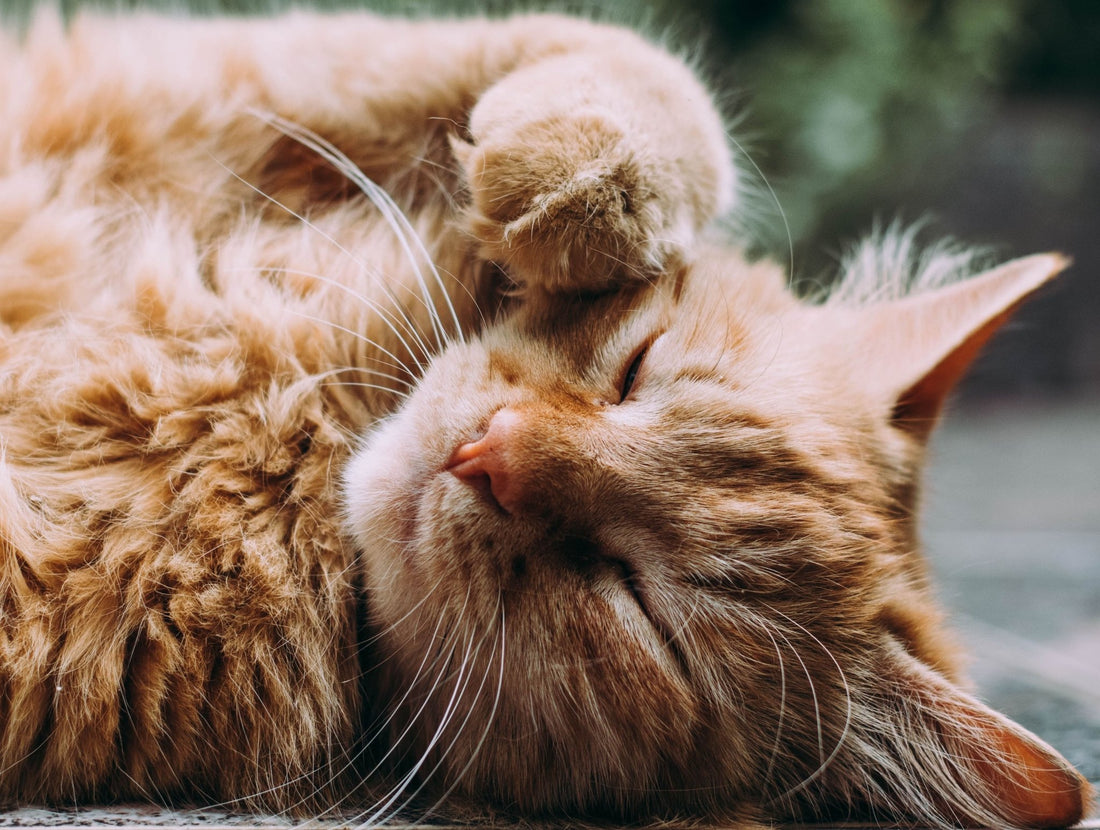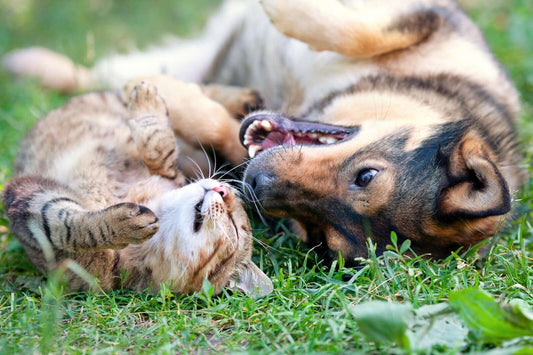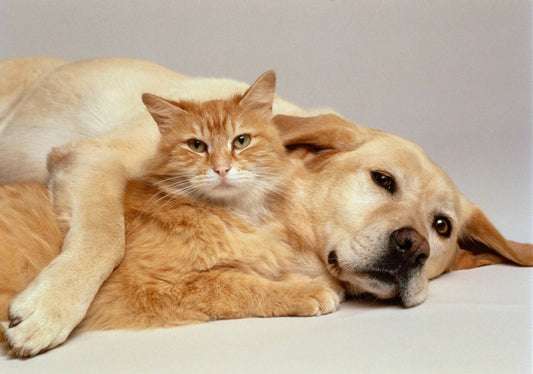It can be worrying to discover matted fur on your feline friend. A mat refers to knots, tangles, or clumps that form when your cat's fur gets twisted together. This causes sections of their fur to fuse and bind together in dense wads.
Mats typically show up in cats with medium to long fur that's more prone to tangling. Persians, Himalayans, Ragdolls, and Maine Coons are some breeds that frequently deal with matted fur. The matts form when loose hairs or debris gets tangled up near the skin before the cat can groom it out. Over time, these knots tighten and worsen.
But don't panic - mats can be safely removed with some patience and gentle techniques. The key is avoiding excessive pulling or force. With the right approach, you can get those pesky mats out while keeping your kitty as comfortable as possible.

Causes of Matted Fur
There are a few key reasons mats and tangles develop in your cat's coat:
Lack of Regular Brushing: When fur doesn't get brushed thoroughly and frequently, loose hairs shed but get caught in the coat before making it to the ground. This causes strands to twist together into mats if not removed.
Long Fur: Long-haired cat breeds like Persians tend to get more mats as their long locks are naturally prone to tangling. The long strands wrap around each other, forming knots near the skin that worsen over time.
Skin Conditions: Skin issues like allergies, parasites, infections or overactive oil glands can cause excessive itching. Your cat may lick or scratch more, tangling their fur into mats.
Over-grooming: Stress, anxiety or other behavioural triggers can cause cats to over-groom. The excessive licking and biting motions can knot up their fur.
The main takeaway is that matted fur results from something interfering with your cat's natural grooming routine and fur shedding cycle. Identifying the specific factor will enable you to properly treat the cause while removing mats gently.
Signs of Matting
You'll notice a few clear signs indicating your cat has developed mats in their fur:
-
Knots and Tangles - You'll see tightly wound knots and tangles when you sift through their coat. Mats often form around the legs, belly, chest, behind the ears and base of the tail.
-
Clumped Fur - The fur will be fused together in dense, thick wads instead of feeling soft and fluffy. You may see the skin puckering around mats as they tighten.
-
Grooming Difficulty - Your cat may start excessively licking, chewing or biting at mats as they struggle to detangle those areas through normal grooming.
-
Agitation - They may act distressed, shake their body, bite or even scratch you when you attempt brushing near mats due to discomfort.
-
Skin Irritation - Tight mats can cause rashes, sores and skin infection. You may notice redness, scabs, bald patches or your cat over-grooming certain areas.
-
Weight Loss - Severely matted cats can have trouble eating properly due to restricted jaw movement or pain. This causes decreased appetite and weight loss.
- Lethargy - As mats worse, the constant discomfort and skin irritation can make your cat withdraw and act depressed.
So inspect your cat's coat thoroughly and watch for any signs of distress during grooming. Addressing mats early prevents them from tightening close to the skin and causing complications.
Safe Detangling Tips
When tackling mats, always use a gentle approach to avoid hurting or stressing your cat:
-
Introduce detangling tools slowly - Let your cat inspect, sniff and become accustomed to tools like combs and dematters. Reward with treats for tolerant behaviour.
-
Work in a detangling product - Sprays, gels or oils help lubricate and loosen mats for easier removal. Apply and let soak in before brushing.
-
Carefully comb out small mats - Start on the outside before getting close to the skin and gently work in. Use a wide-tooth comb or dematter to loosen strands while protecting skin.
-
Trim around thick mat edges - If combing a large mat is ineffective, carefully use blunt scissors to snip away at the outermost hairs. Never cut close to the skin.
-
Seek professional help for severe cases - For very extensive matting, visit a trained groomer to safely remove them. They have the proper tools and experience. Your cat may need to be shaved to get rid of severe mats.
- Stop and give breaks if cat gets upset - Go slowly and monitor their reaction. Stop if they get agitated. Give praise and calming treats.
The key is using products and tools designed to detangle safely. Routinely inspect your cat's coat and don't allow mats to get tightly wound. Be patient, take breaks, reward cooperation. Your cat's comfort comes first.

Prevention Tips
The best way to handle mats is to avoid them forming in the first place. Here are some key prevention tips:
-
Brush regularly - Daily brushing with a wide-toothed comb removes loose hairs before they tangle and form mats next to the skin. Focus on areas prone to matting.
-
Keep fur trimmed - For long-haired cats, keep the fur trimmed to a medium length to minimize tangling. Speak to your groomer about an appropriate cut for your cat's coat type.
-
Check for skin issues - Treat any allergies, parasites or infections that cause itching/over-grooming leading to matted fur. Your vet can help diagnose the problem.
-
Address stress/anxiety - Deal with any behavioural triggers that result in excessive grooming behaviors using products like calming pheromones.
-
Proper diet - Ensure your cat's diet has nutrients for healthy skin and coat. Omega fatty acids are especially beneficial.
- Sanitize grooming tools - Clean combs, brushes and blades regularly to avoid transferring any pathogens that may cause skin irritation.
With diligent, routine grooming and proactive medical care, you can maintain your cat's coat in optimal condition and avoid painful mats.
When to Contact the Vet
While you can manage minor matting at home, certain situations require contacting your vet:
-
Skin Irritation - If tight mats have caused any sores, wounds or rashes on the skin, a vet visit is needed to treat infection and prevent further complications.
-
Signs of Pain - If your cat shows signs of pain like vocalizing, biting or acting lethargic, a vet should check whether the mats or any related skin issues are causing pain, which may require medication.
-
Persistent Matting - Veterinary care may be required if daily brushing and grooming doesn't resolve mats or if they recur frequently.
-
Matting in Elderly/Disabled Cats - For senior cats or cats with mobility issues, excessive matting can indicate they need assistance with grooming activities. Ask your vet for advice.
- Severe Matting - Extensive or painful matting may require sedation for a full and safe removal of mats. Leave it to your vet's discretion.
Don't hesitate to call your vet if mats persist, are causing your cat pain, or affecting their quality of life. Some cases of matting do require medical attention. Your vet can guide you on next steps.











